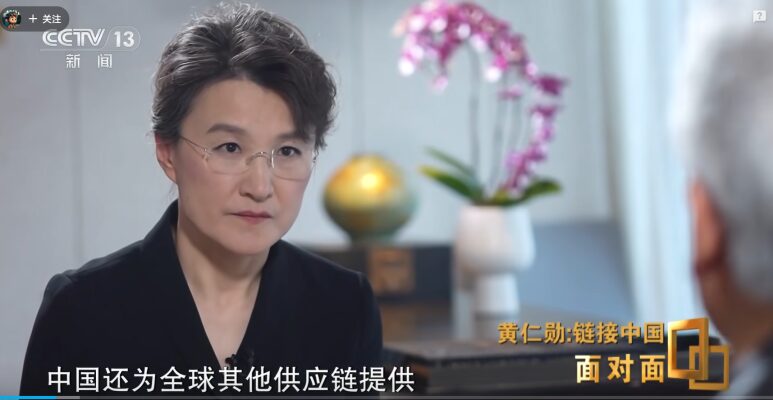Jensen Huang’s China Strategy: Unpacking Nvidia’s Shocking Survival Playbook

In the epicenter of the US-China tech war, Nvidia CEO Jensen Huang’s recent interview in China offers a masterclass in corporate diplomacy. As a market analyst based in China, here’s my breakdown of his core message, which reveals a sophisticated strategy for navigating geopolitical storms.
1. “Great ideas come from constraints”: Turning Regulation into Innovation
In response to US export controls, Nvidia developed the H20 chip for China. Huang didn’t just see this as compliance; he framed it as a catalyst. “When you have constraints, I think it forces great ideas to burst out,” he said. This shows the Jensen Huang China Strategy is built on respecting the innovative adaptability of the Chinese tech ecosystem, even with restricted hardware. (Source: US BIS Export Regulations – https://www.bis.doc.gov/)

2. “Huawei is a competitor, not an enemy”: A New Paradigm on Rivalry
In a stunning statement, Huang called Huawei a “great company” and clarified, “We compete, we’re not at war.” He believes competition is essential to create markets and build the future. This perspective allows Nvidia to maintain a competitive edge while seeking collaborative opportunities, especially in China’s “shockingly amazing” EV market. (Related: See our previous analysis on [The Terrifying Growth of China’s EV Market])
3. “China’s supply chain is a wonder of the world”: Rejecting Full Decoupling
Huang firmly stated that complete decoupling is neither possible nor desirable. He described China’s supply chain as a “wonder of the world,” arguing that its interdependence fosters resilience and agility. This view treats the supply chain not as a cost center, but as a strategic asset for global innovation.

Conclusion: Is Nvidia’s Future with China or the US?
The Jensen Huang China Strategy is a masterstroke of balance. He assures the US of compliance while assuring China of his commitment to the market. The ultimate question remains: which way will Nvidia lean next? Perhaps Huang’s answer is “both.” He is not choosing a side; he is attempting to master the space in between.
My AI Jazz Project: